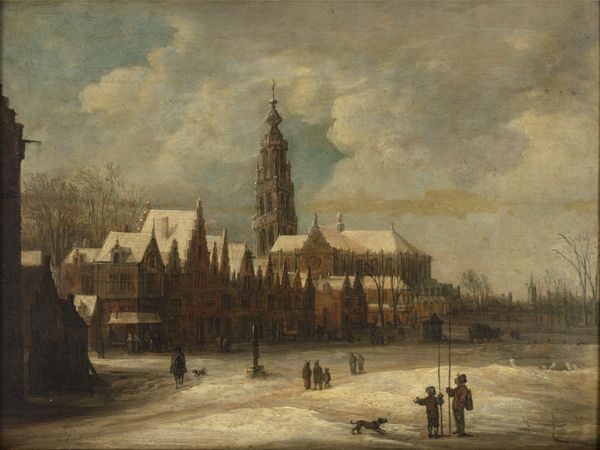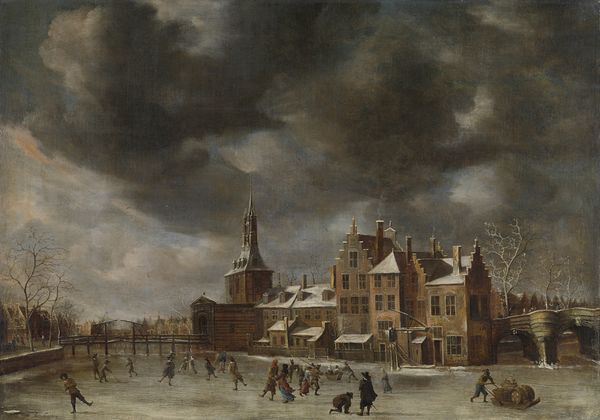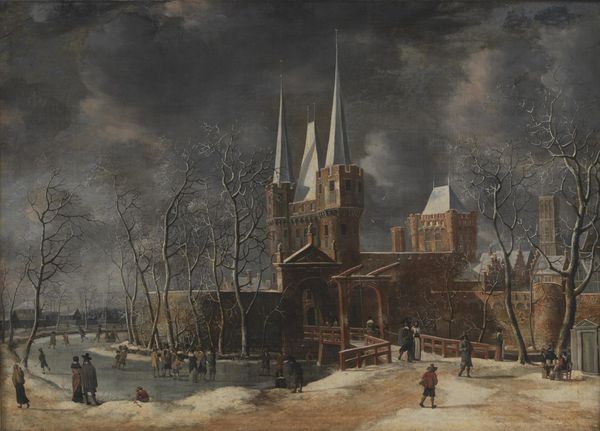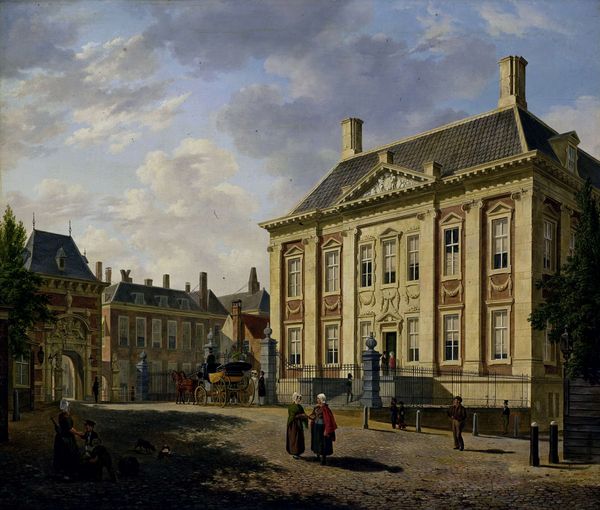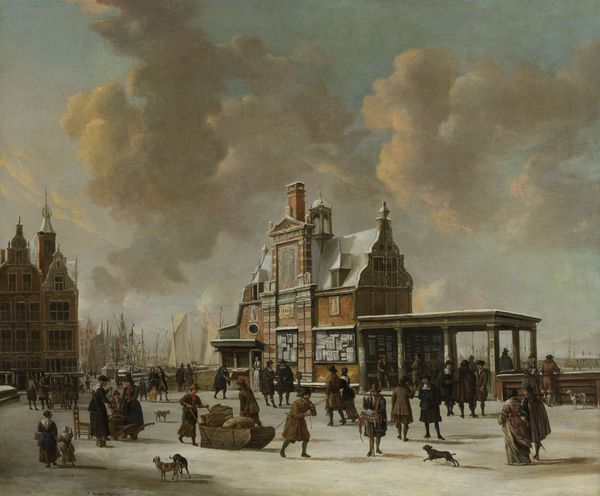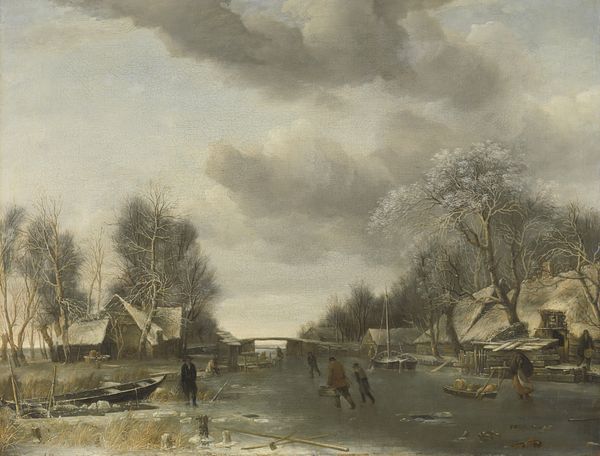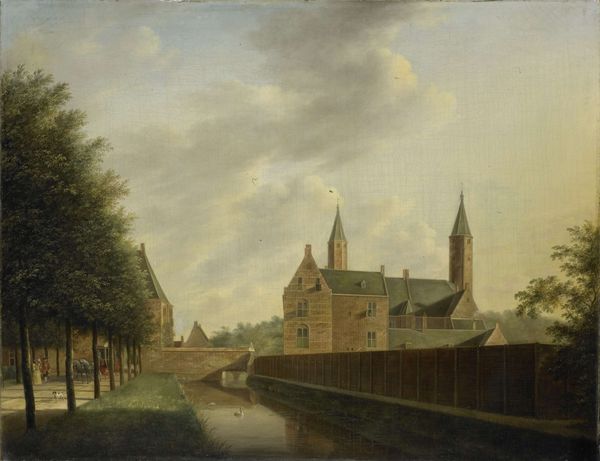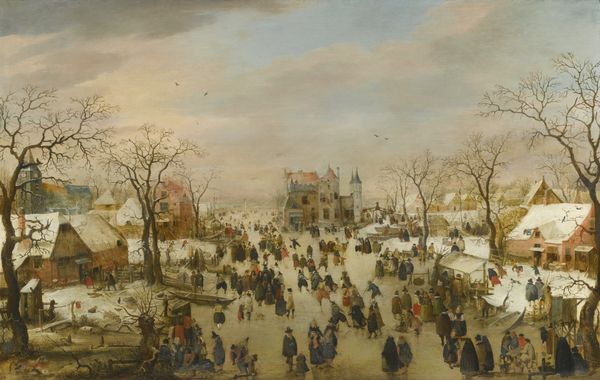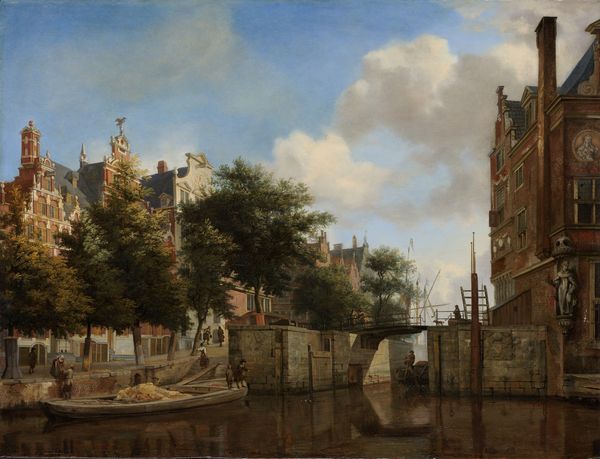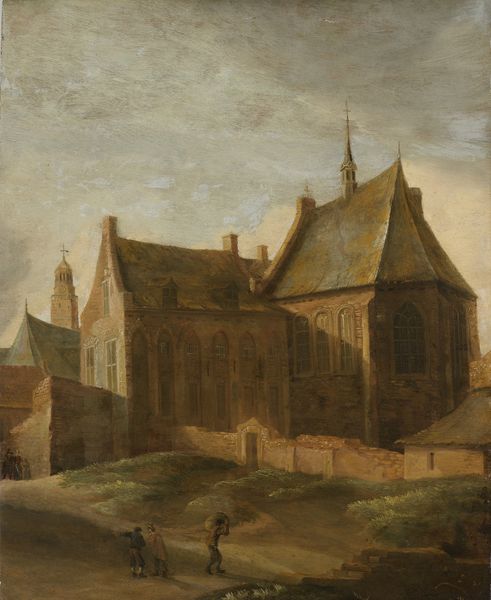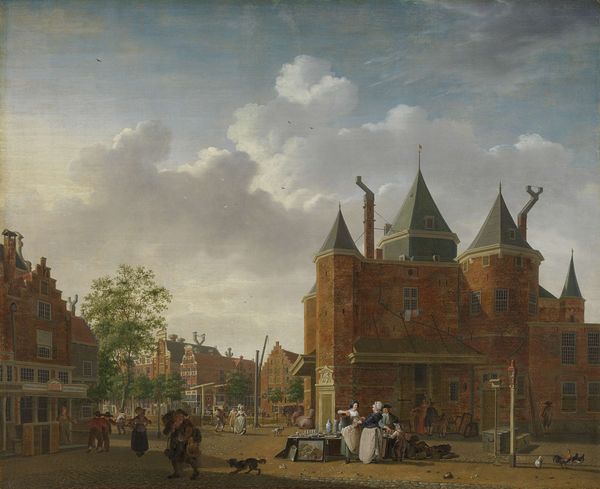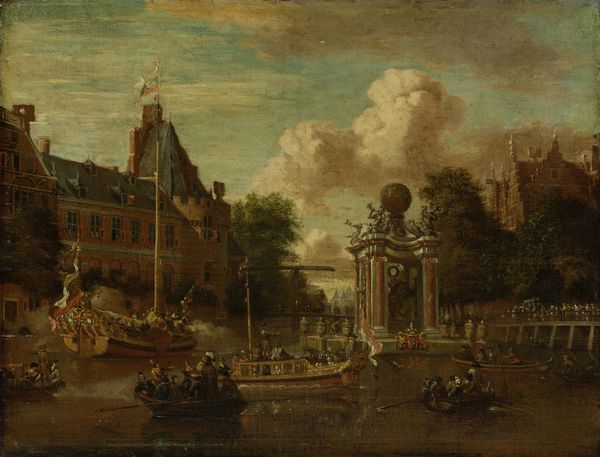
painting, watercolor
#
narrative-art
#
painting
#
street view
#
landscape
#
watercolor
#
romanticism
#
cityscape
#
history-painting
#
watercolor
#
realism
Dimensions: height 94.5 cm, width 125.5 cm
Copyright: Rijks Museum: Open Domain
Editor: Here we have Carel Lodewijk Hansen's "The Rapenburg in Leiden," painted in 1807 with watercolors. It's quite a bleak cityscape, isn't it? So much destruction. I am struck by how detailed the rendering of the ruined buildings are. What do you see in this piece? Curator: From a materialist perspective, this watercolor transcends mere depiction; it serves as a document of material conditions and the social repercussions of war. Look at the debris: the shattered bricks, the charred timbers. These aren't just aesthetic details; they're remnants of labor, transformed into wreckage through conflict. Who were the builders, and who profited from their labor before its violent destruction? Editor: That's a sobering way to look at it. It does force you to think about the lives impacted beyond the obvious. Curator: Precisely! Consider the labor required to rebuild, or not. The social context is key. Whose hands will reconstruct this city, and under what economic constraints? The pigment itself is revealing; where did Hansen source his materials, and how did the industrial revolution play a role in the production and dissemination of paint? The image, therefore, is not just an image but an index of production, consumption, and violent waste. Editor: I see what you mean. It’s like, each brushstroke hints at larger economic and material processes happening at that time. Curator: Exactly! Even the choice of watercolor as a medium speaks volumes. It suggests accessibility, portability perhaps implying a burgeoning art market or a means of disseminating visual information widely. Editor: It really opens my eyes to see beyond the surface of the image and understand it as a product of specific materials, labor, and social forces. Thank you! Curator: My pleasure. By recognizing art as an object embedded in broader networks of material culture, we understand art’s integral part of society.
Comments
rijksmuseum about 2 years ago
⋮
On 12 January 1807 a ship laden with 37,000 tons of gunpowder exploded in the centre of Leiden. It was a national disaster: 150 people died and many houses were destroyed. King Louis Napoleon, shown at left among Leiden city officials, acted like a true father to his subjects. Three days after the explosion, he visited the scene and organized financial help. This made him very popular with the Dutch.
Join the conversation
Join millions of artists and users on Artera today and experience the ultimate creative platform.
